Meet the Hewitts: Part Three described how Sarah and Eleanor’s knowledge of the arts of decoration grew as they embarked on a lifelong passion for collecting. This segment explores their role as prominent members of Gilded Age society.
Margery Masinter, Trustee, Cooper-Hewitt, National Design Museum and MA’93, History of Decorative Arts and Design, Parsons the New School for Design
Sue Shutte, Historian at Ringwood Manor
Gilded Age Balls, Entertainments, Fashion
The extravagant Vanderbilt Ball held on March 26, 1883 is often considered to have been the social affair of the Gilded Age. Mrs. William K. Vanderbilt sent 1,200 invitations to her fancy dress ball planned to showcase her new Fifth Avenue French-style chateau, designed by Richard Morris Hunt. The Washington Post’s headline called the event “A Bewildering Display of Wealth and Bizarreric.” On March 27, the New York Times reported that in deciding what costume to wear the ball had “agitated New York society more than any other social event in many years . . . business men found their minds haunted by uncontrollable thoughts . . . while the ladies have been driven to the verge of distraction . . . .” The amazing array of costumes created for this event were described in minute detail, along with the fantastic entertainment and fairyland decor. The Times also reported that Abram Hewitt “appeared as King Lear while yet in his right mind,” (Abram denied he was ever there!) and the costumes of his daughters “attracted much attention.”
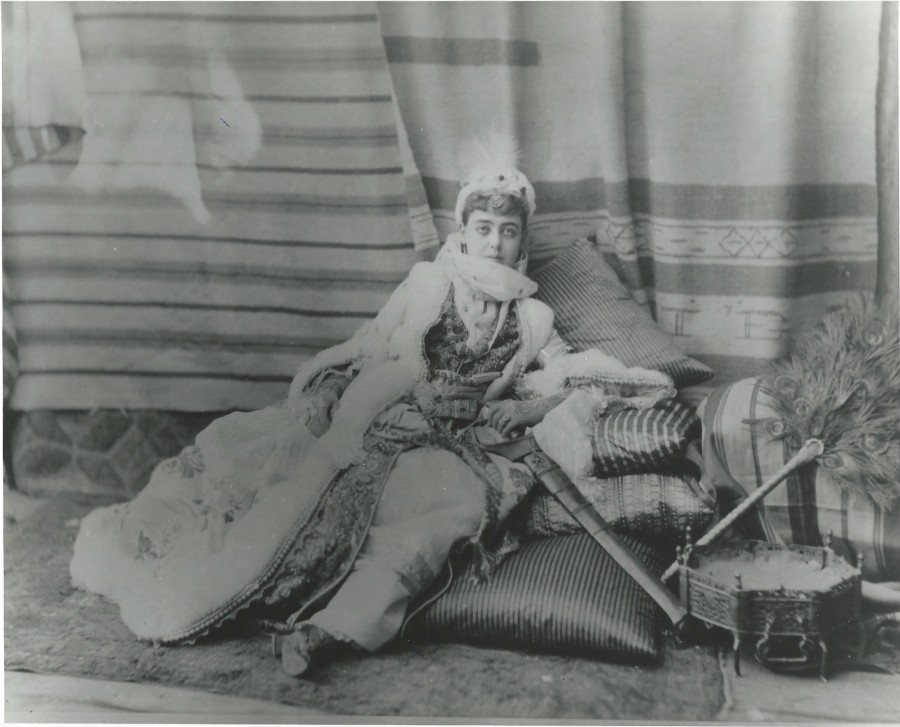
Sarah, costumed for the Vanderbilt Ball as a Persian Princess. Her blue brocade robe trimmed with white fur and large pearls, girdle of crimson satin, belt of gold with two daggers, and feathered turban were described in “List of costumes from the Sarah Cooper Hewitt Collection,” Smithsonian Archives. Photo, Cooper-Hewitt, National Design Museum
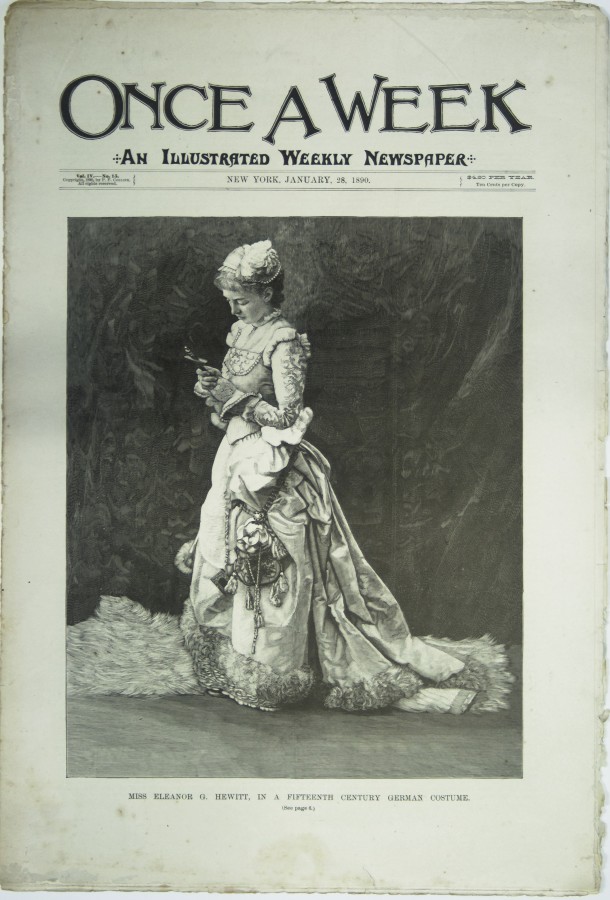
Eleanor, pictured in the costume she wore to the Vanderbilt Ball, and described as “One of the most attractive and popular girls in New York Society . . . rarely gifted by nature and most carefully educated.” Once a Week: Illustrated Weekly Newspaper, Colliers
With the meteoric rise of wealth during the late 19th century came an abundance of leisure time and entertainments. Balls, operas, concerts, theatrical performances, and dinners were all part of the Hewitt daughters’ full social calendars. Their scrapbooks are filled with dozens of theater and opera programs and invitations to at-home amateur concerts and benefit theatricals.

Clippings from scrapbooks. Courtesy of Cooper Union Library

The Mad Tea Party Programme. Courtesy of Cooper Union Library
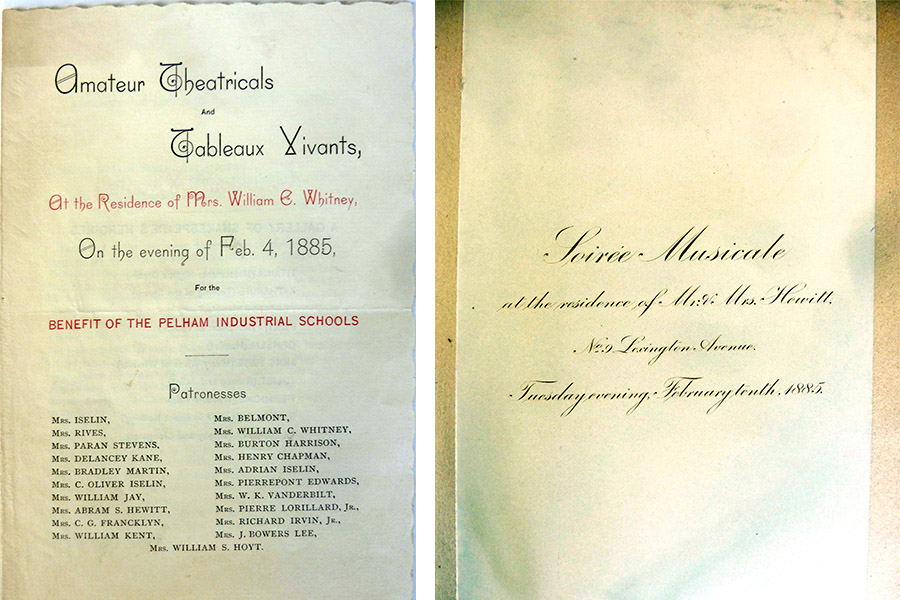
Whitney invitation and Hewitt Soiree invitation. Courtesy of Cooper Union Library
And for every social event the perfect dress was needed, of course! The Hewitt sisters wardrobes included morning or day dresses, afternoon or visiting dresses, dresses for dinner parties, costumes (fancy dresses), and ball gowns.
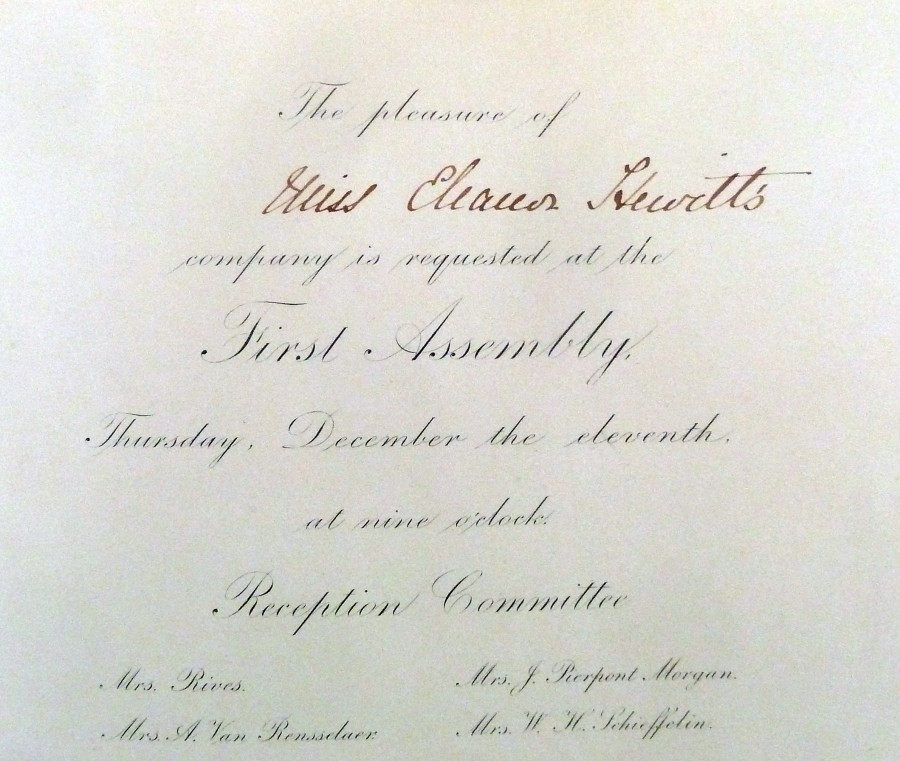
Eleanor Hewitt’s invitation to the First Assembly. Collection of the Museum of the City of New York
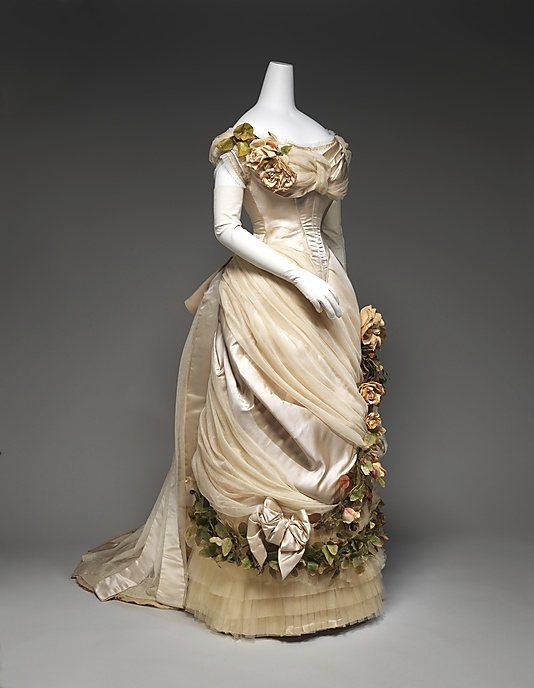
Evening dress, designed by House of Worth, ca. 1882. Eleanor likely wore this exquisite gown to her First Assembly. Courtesy of the Metropolitan Museum of Art Costume Institute, Gift of the Princess Viggo
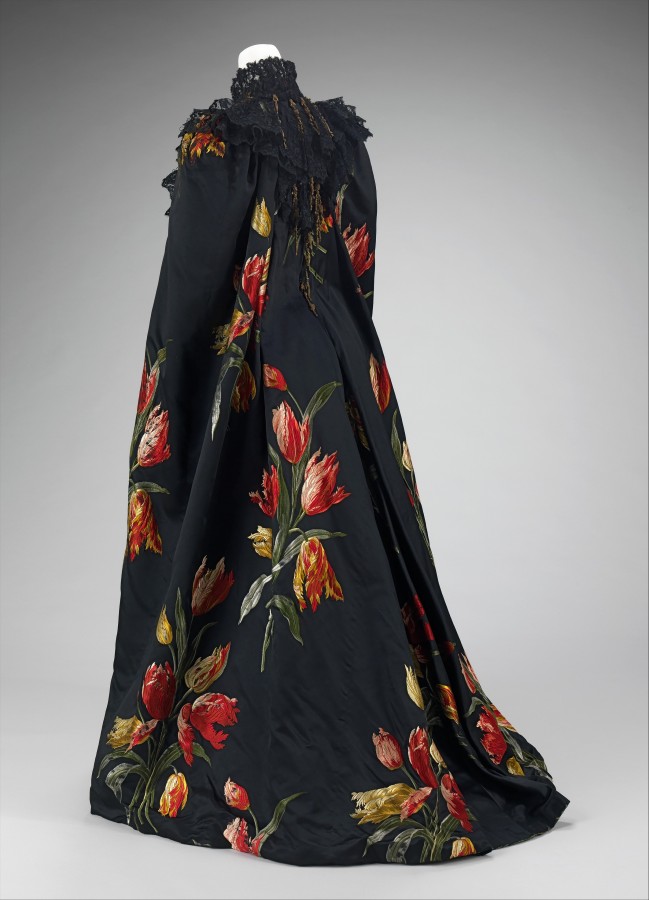
Evening cloak, designed by House of Worth. This magnificent textile, called “Tulipes Hollandaises,” was a prize winner at the 1889 Paris Exposition Universelle. It was most likely worn by Sarah. Courtesy of the Metropolitan Museum of Art Costume Institute, Gift of the Princess Viggo
After Peter Cooper died in 1883, his daughter Amelia hired the young architect Stanford White (1853-1906) to renovate 9 Lexington Avenue in the Beaux Arts style. White designed a new ground floor entrance, a grand Italian marble foyer and wide staircase, and a music room and ballroom. The enlarged dining room featured elaborate hand-carved 17th-century Flemish oak paneling and a Venetian allegorical mural, purchased by Amelia in Paris. (The dining room is now installed in the Andrew Dickson White House at Cornell University.) Edward Hewitt wrote that "this was the first room ever lighted by indirect lighting. Mr. Edison supervised it."
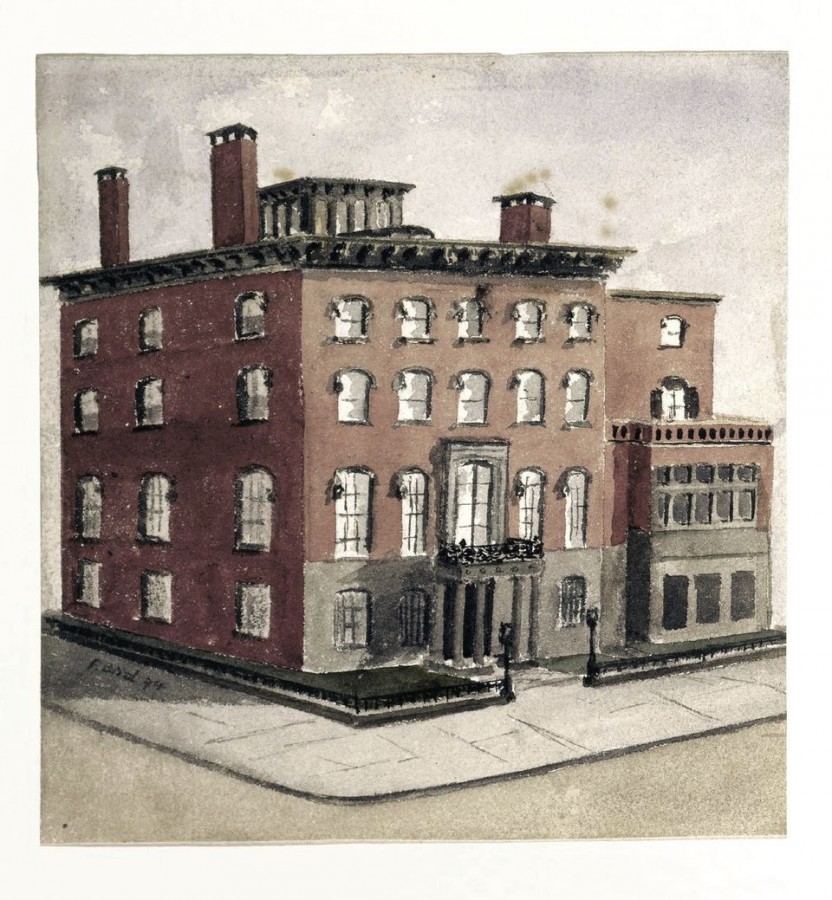
Lexington Avenue, after 1883 renovation by Stanford White. Watercolor, Cooper-Hewitt, National Design Museum
The new additions suited Abram Hewitt, as he preferred to entertain at home and the new spaces allowed for larger parties. The Hewitts were celebrated in the press for their at-home musicales, clever costume suppers, and dances with imaginative themes.
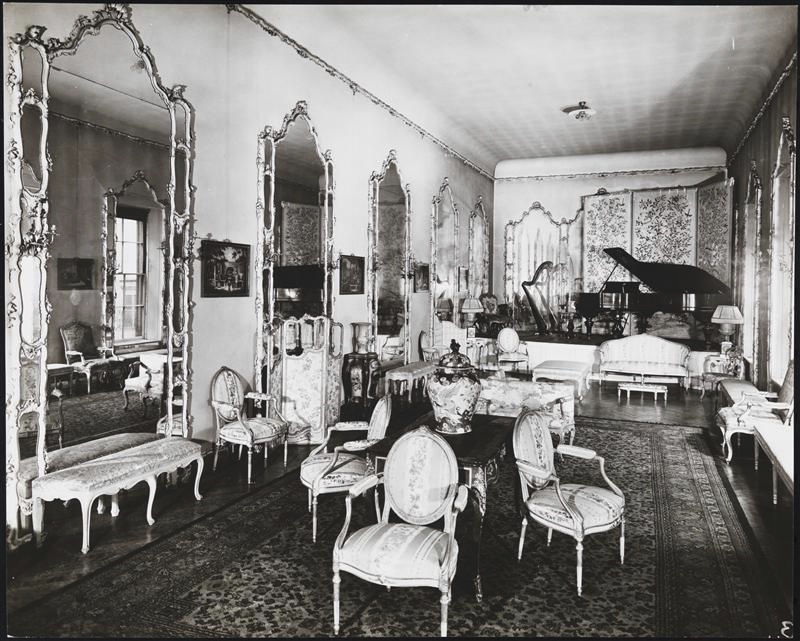
Ballroom, 9 Lexington Avenue. Collection of Museum of the City of New York

Newspaper headings about the Hewitts: “Hewitt Costume Party,” “Theatricals and Dance,” and “Chinese Comedy on Hewitt Stage.”
At the family’s weekly gatherings, artists and actors mingled with members of society, educators, politicians, and foreign visitors for lively conversation about the latest events and ideas.
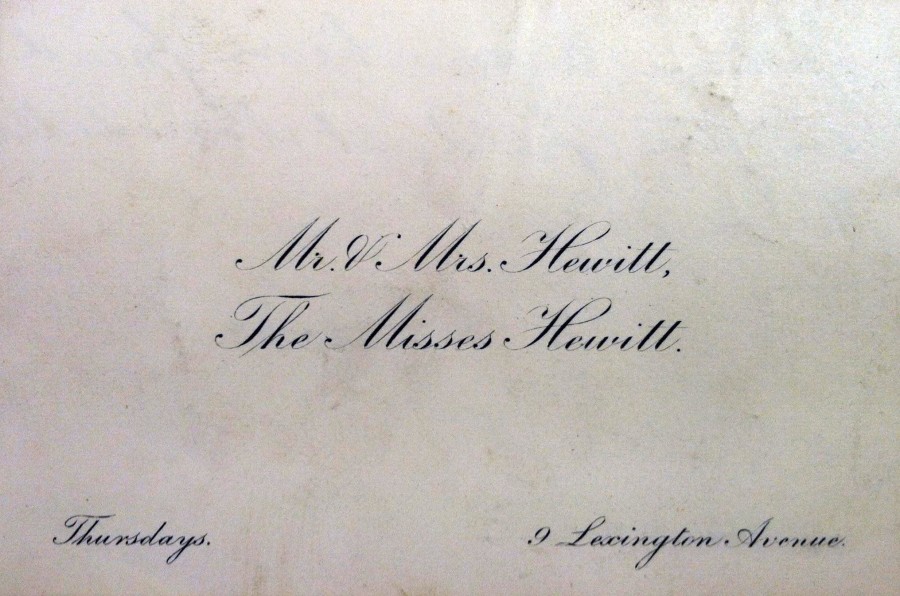
Hewitt Calling Card. Courtesy of Ringwood Manor
In 1885 Sarah and Eleanor organized the Ladies’ Amateur Orchestra, which played for at-home and charity events. Dubbed “Swelldom’s Belles” by the press, the orchestra was comprised of socially prominent women and strictly ruled by Sarah. Sarah performed as first violinist, and Eleanor played the viola. How like Sarah to hire a clipping service to gather all their press accolades!
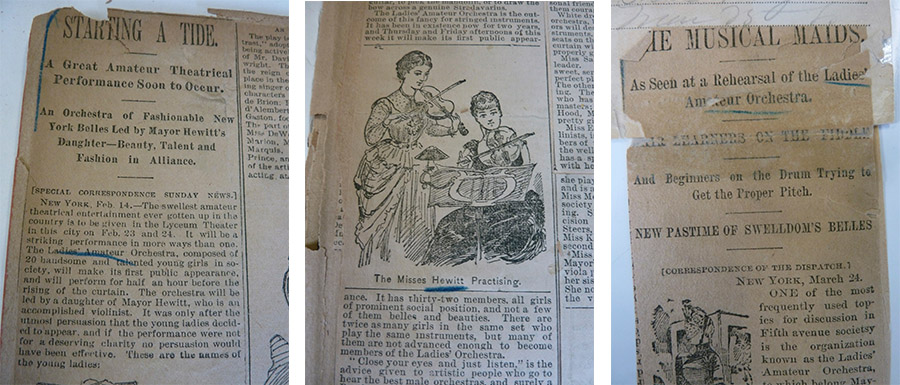
Newspaper headings about the Orchestra. Courtesy Cooper Union Library
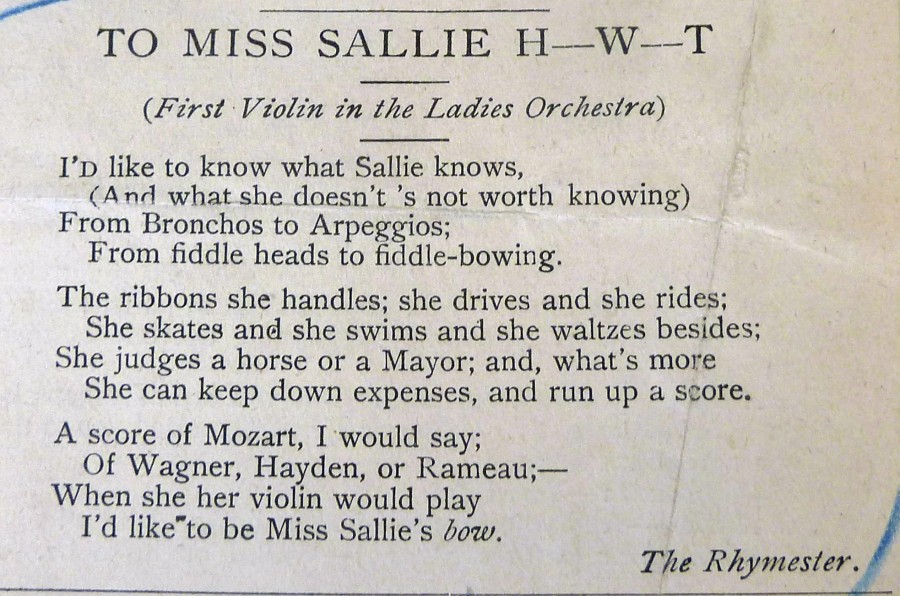
A poem for Sallie from Town Topics. Courtesy Cooper Union Library
A highlight of the Hewitts’ trips to Paris was shopping at the exclusive House of Worth at 7 Rue de la Pais. Over the years, the Hewitt Sisters had their extensive wardrobes reconstructed, re-embellished, rebuilt, and carefully preserved in the large trunk room at 9 Lexington Avenue. Upon Sarah’s death in 1930, they were bequeathed to Amy’s daughter, Eleanor Green, who, upon her marriage, became Princess Viggo of Denmark. She distributed the large collection of day dresses, gowns, outdoor costumes, and accessories to New York museums. In 2009, the Brooklyn Museum transferred its Hewitt collection to the Metropolitan Museum of Art. In these photographs from Vogue Magazine, May 1931, the Princess Viggo models her aunts’ fashions.
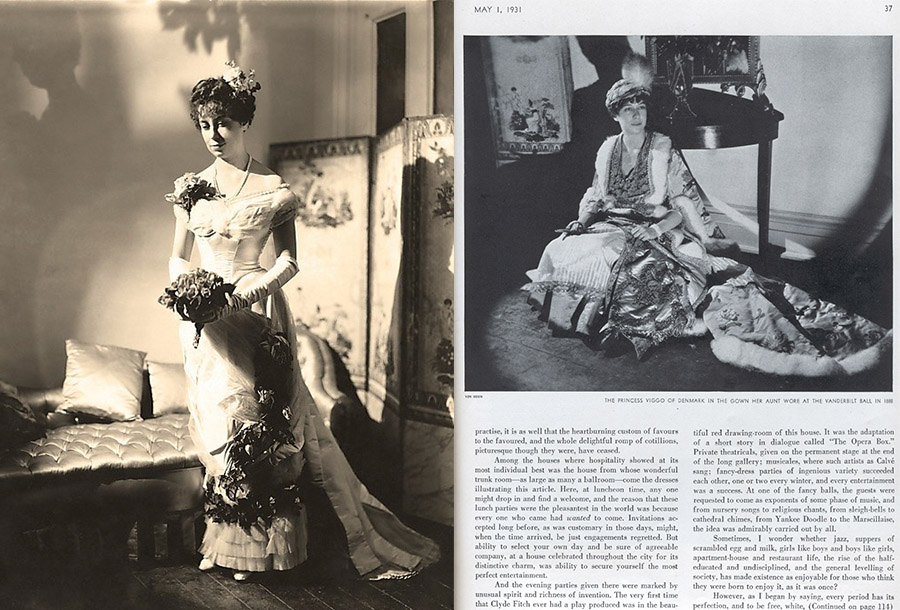
Eleanor’s Ball Gown by Worth & Sarah’s Persian Princess costume
Interactive Timeline of the Cooper Hewitt World
Full timeline is available here.
Sources:
Durer, Caroline. "The Undying Quality of Style," Vogue, May 1, 1931.
Hewitt, Edward. Letter to Mr. Brossman, May 8, 1953. Smithsonian Institution Archives.
"Mrs. W.K. Vanderbilt's Great Fancy Dress Ball," New York Times, March 27, 1883.
Nevins, Allan. Abram S. Hewitt. New York: 1935.
